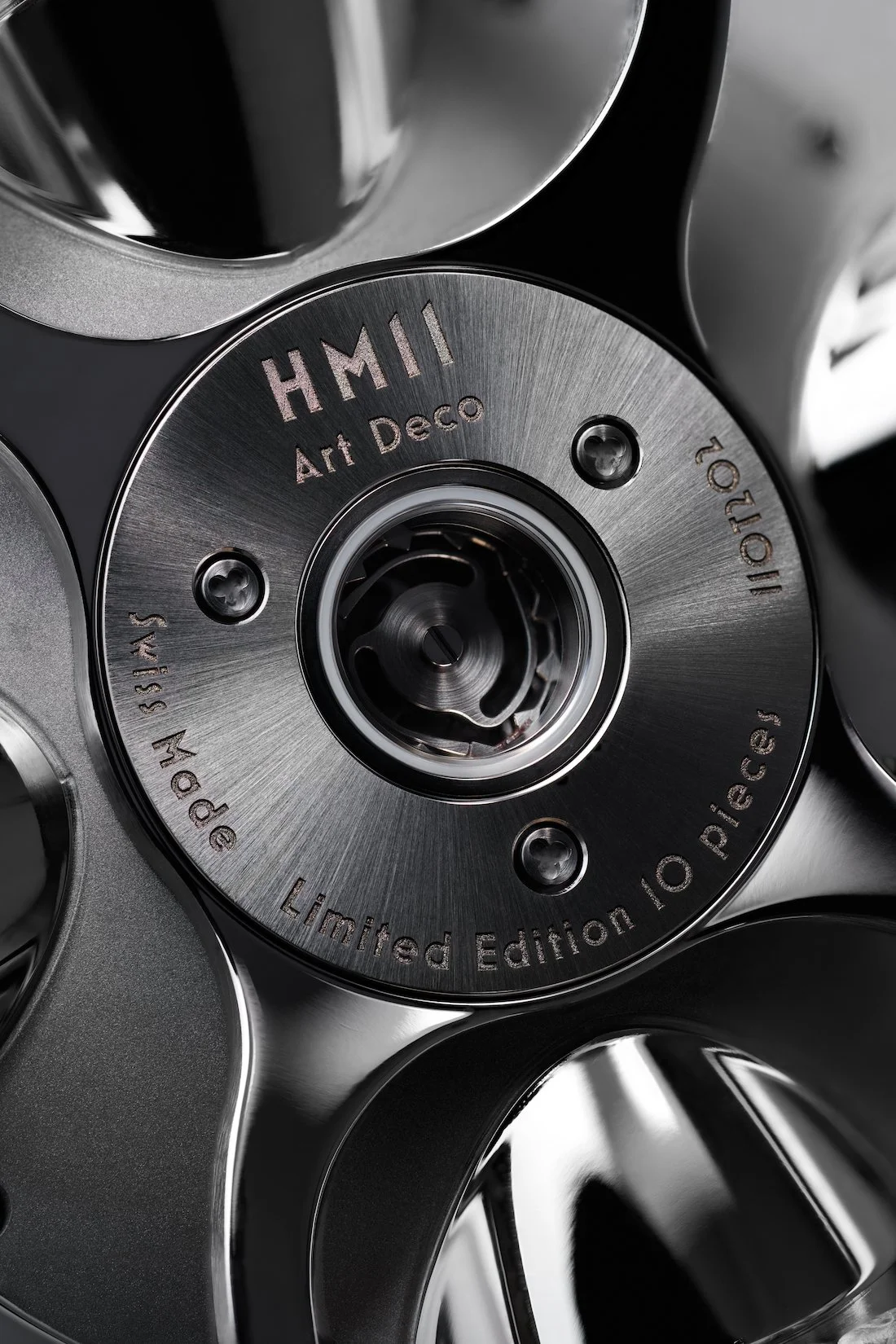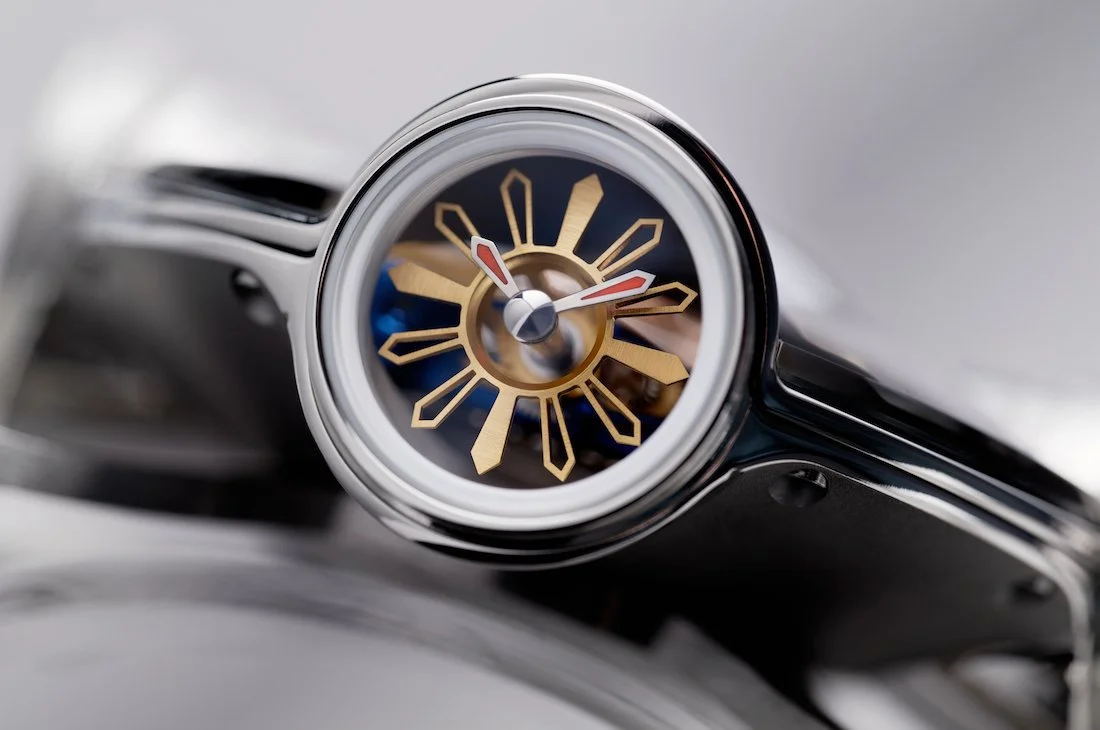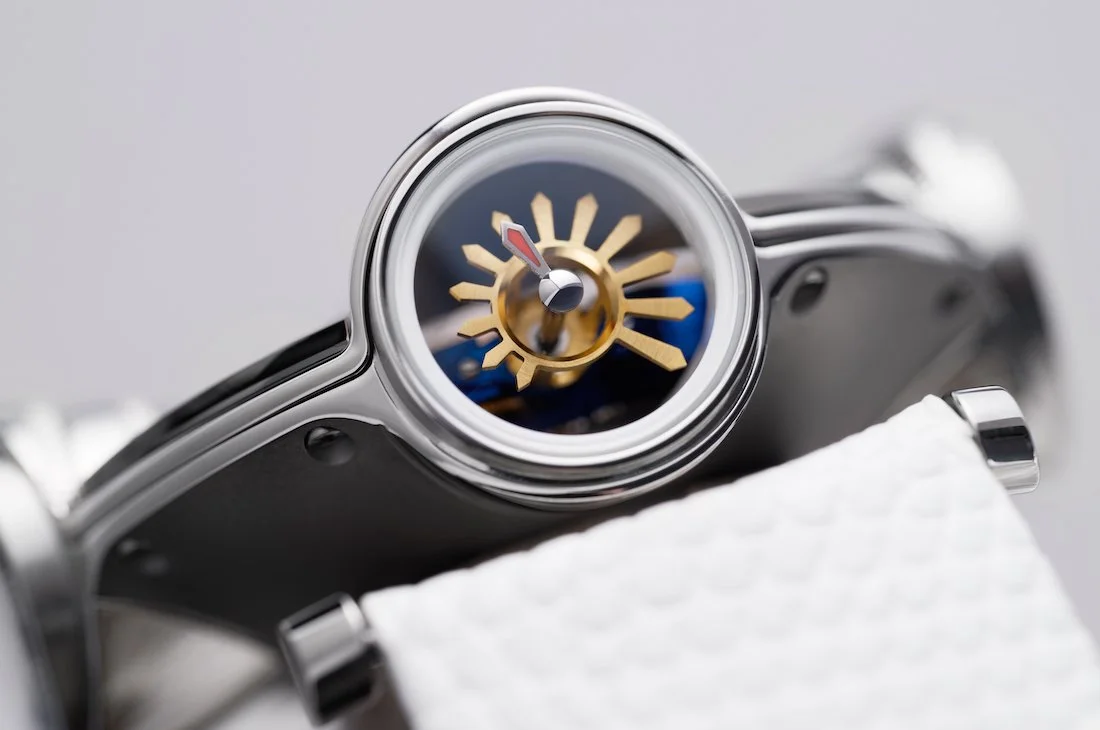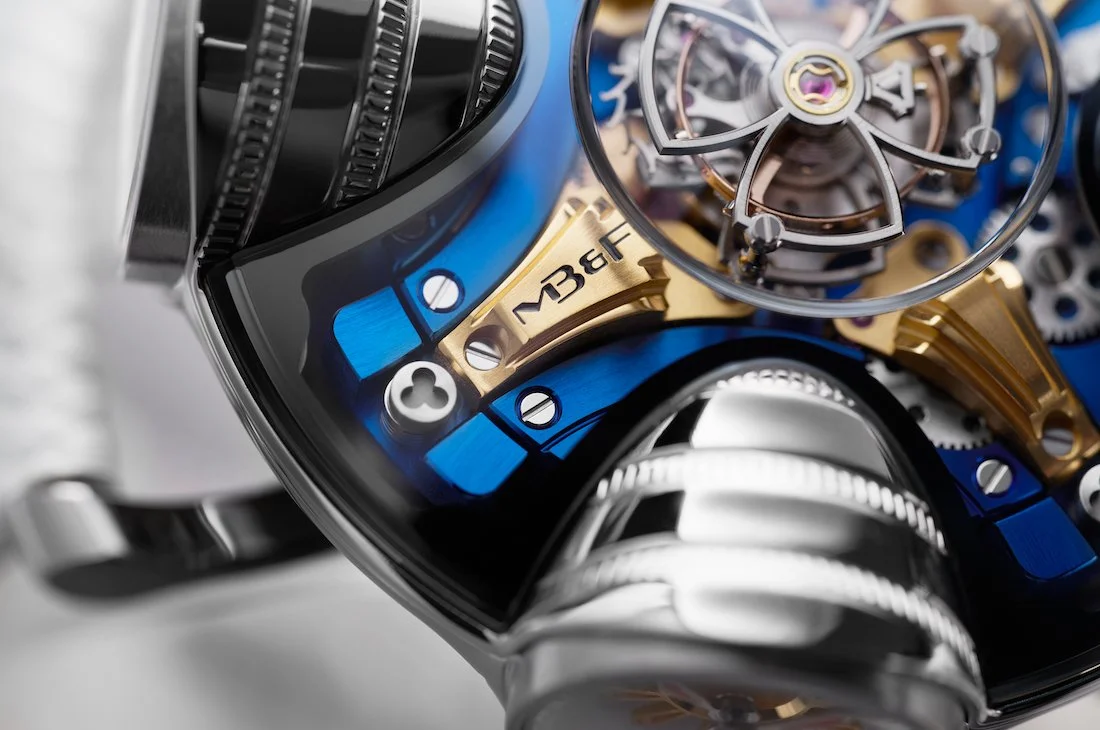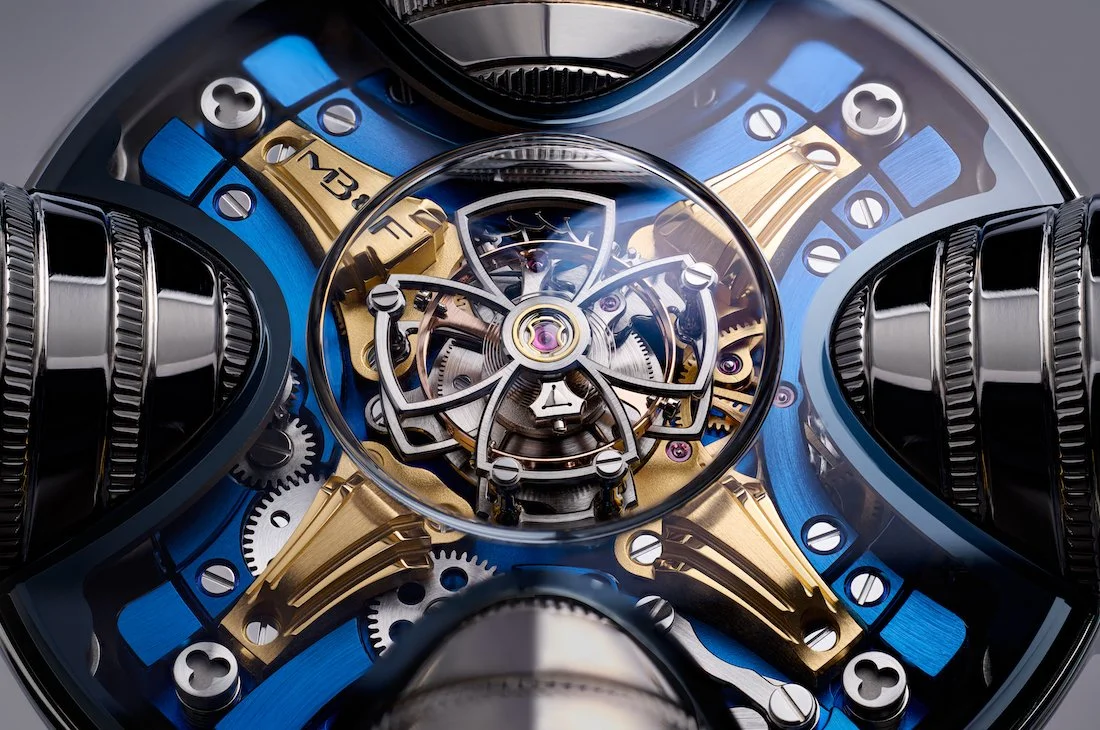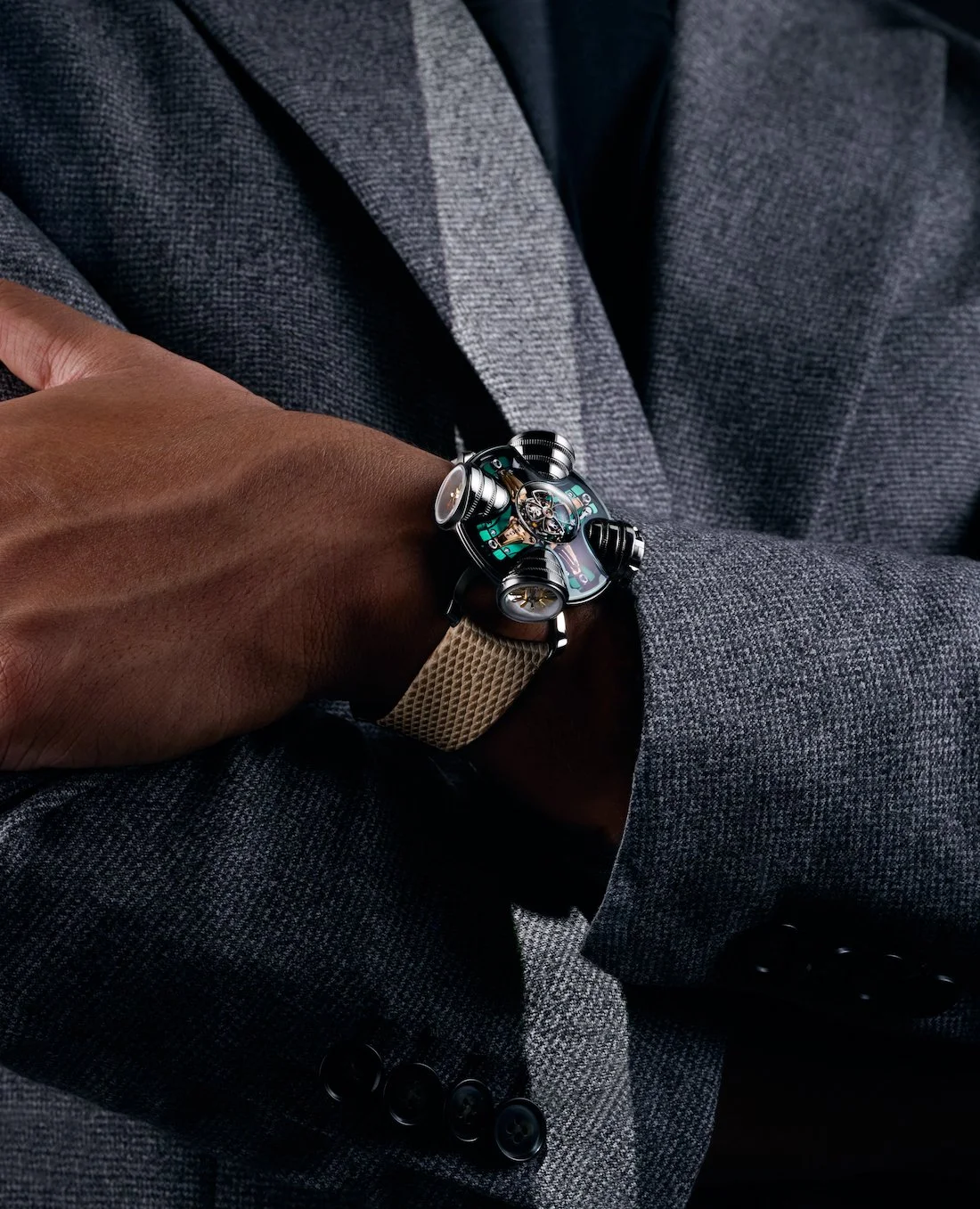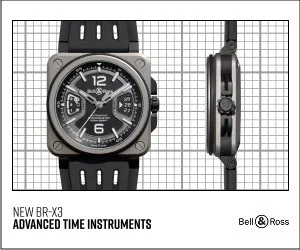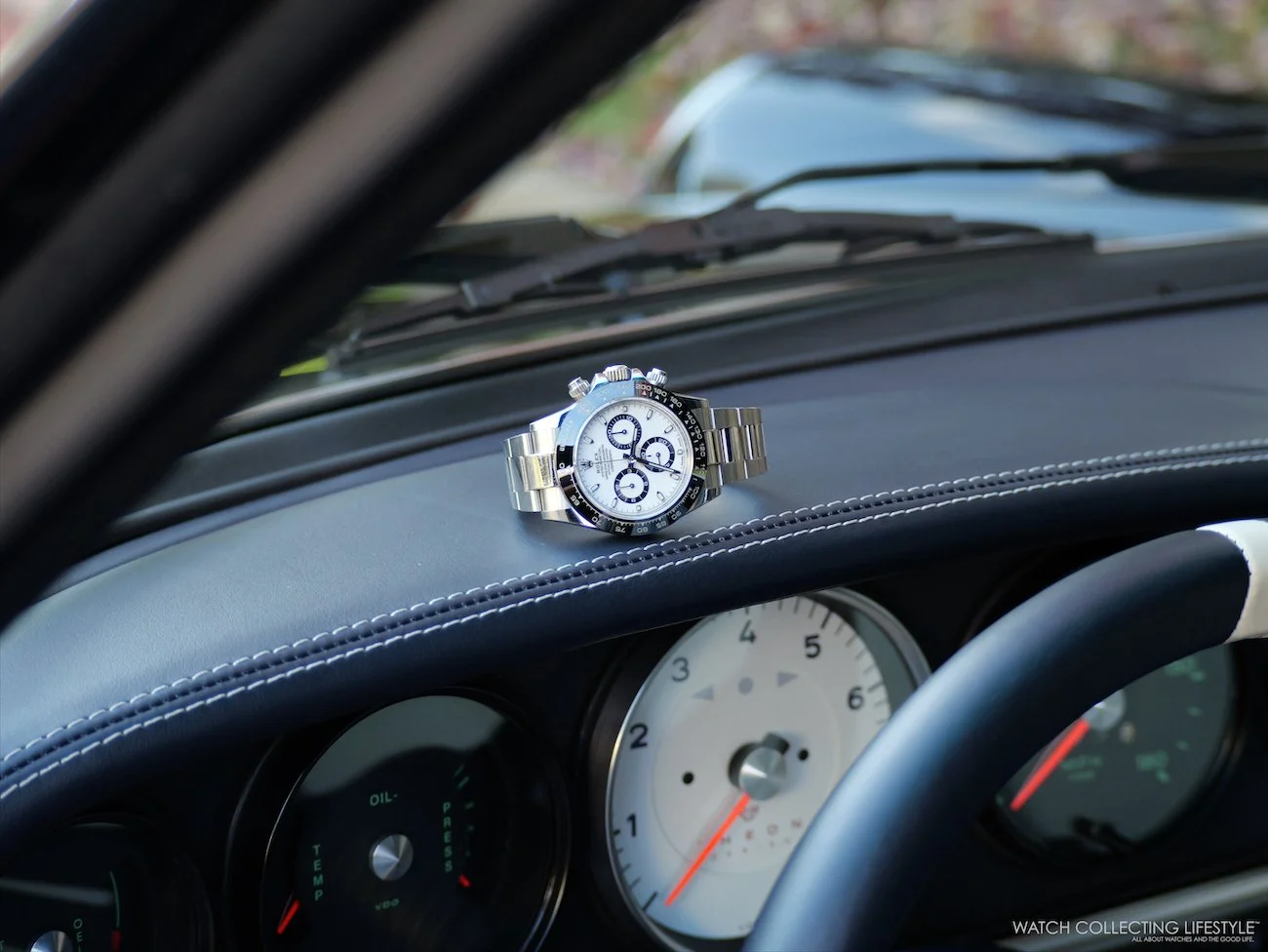On the occasion of Dubai Watch Week, MB&F presents the new HM11 Art Deco—limited to 20 pieces for MB&F's 20th anniversary. This latest chapter reinterprets one of the brand's most architecturally ambitious creations through 1930s geometric elegance. The HM11 Art Deco arrives in two editions of 10 pieces each, one with a blue dial plate with 3N yellow gold-toned bridges and a white lizard strap, and the second one with a green dial plate with 5N rose gold-toned bridges and a beige lizard strap.
When MB&F unveiled the HM11 Architect in 2023—see photo below—, conceived by Maximilian Büsser and designer Eric Giroud, it drew inspiration from the neo-futuristic, organic architecture of the 1960s and '70s. The watch became a miniature home: four symmetrical rooms radiating from a central atrium, crowned by a flying tourbillon beneath a double-domed sapphire roof.
In the 1960s and 1970s, an avant-garde architectural concept gained popularity in many parts of the world, and ‘bubble houses’ were being built all over. Perfect examples of this architecture are the ‘La Maison Bernard’ house and the ‘Le Palais Bulles’ houses, which belonged to Pierre Cardin—an Italian-French Fashion Designer and Icon—located in the South of France in Théoule-sur-Mer.
The Watch House with Four Rooms
For 2025, Berlin-based designer Maximilian Maertens revisits this architectural marvel through the lens of 1930s Art Deco. Where the Architect spoke in soft curves, the Art Deco stands tall with geometric precision—the difference between Le Corbusier's flowing spaces and the stepped majesty of the Chrysler Building.
The 42 mm grade 5 titanium case functions as a rotating house with four distinct rooms. At its heart sits a flying tourbillon, visible through the transparent sapphire roof. The HM11 embraces Art Deco through its architectural form and visual design. The display elements evolve from their original conical rod configuration into radiating sunburst patterns reminiscent of period poster art.
The first room features a time display with a gold radiating sunbeam motif that is partially skeletonized, replacing the original model’s conical rods. White gold skeleton hands feature translucent red enamel inserts, creating a stained-glass effect achieved after dozens of trials.
The second room features the power reserve display, this time with a gold radiating sunbeam motif that creates an arch from smaller to larger rays, along with a white gold skeleton hand that showcases translucent red enamel to indicate the full 96 hours of power reserve.
The third room features a mechanical thermometer that utilizes a bimetallic strip to measure temperatures ranging from -20 to 60 degrees Celsius—0 to 140 degrees Fahrenheit—, with period-inspired typography that reinforces the Art Deco aesthetic.
The fourth room is the time-setting mechanism—a transparent module featuring the MB&F battle axe set into the sapphire-crystal window. This seemingly empty space functions only as the time-setting crown of the HM11 Art Deco.
The bridge work translates these design principles into three-dimensional form: viewed from the top, the bridges adopt a more upright, angular geometry that references decorative masonry and the rhythmic proportions found in architectural façades. Fine grooves carved into the case's small roof components mirror the setback silhouettes of Art Deco skyscrapers like the Chrysler Building. From directly above, these details suggest diminutive towers; from other angles, they establish a vertical cadence that harmonizes with the sunburst dial elements.
The Art Deco Transformation
The Art Deco treatment manifests in significant design decisions. Dial-side displays feature two-tone logic separating rings and fields with graphic clarity. Bridges gain vertical, block-like stances recalling ornamental stonework. Roof elements showcase fine grooves echoing stepped skyscraper profiles like the Chrysler Building. The entire case rotates to wind the watch. Each 45-degree clockwise turn delivers a tactile click and adds 72 minutes of power. Ten complete rotations produce the full 96-hour power reserve—a ritual that transforms winding into an engagement with micro-architecture.
The tourbillon bridge has been redrawn so that its axis aligns with the larger base plate bridges, creating a visual unity that ties the architecture together. The upper cage bridge features hand-finished inward angles, while four peripheral bridges alternate between polished and satin finishes, allowing light to walk across surfaces as the wrist moves.
Revolutionary Winding Mechanism
The in-house manual movement comprises 330 components and 29 jewels, housed within the 42 mm x 23 mm titanium case. Water resistance reaches 20 meters—requiring 19 complexly shaped gaskets, including eight for the oversized sapphire crown alone. Stacked sapphire domes feature anti-reflective coating on both faces. Dark anthracite metallization hides gaskets and structural parts.
Inside, the flying tourbillon built around bevel gears is suspended by four laser-cut steel springs derived from aerospace technology. The curved feet double as strap attachments, spreading load and adding stability during winding.
On the Wrist & Price
The HM11 Art Deco exemplifies how radical designs can evolve while retaining their essential character. Viewed against the original Architect—with its experimental concrete curves—the Art Deco stands upright, structured, graphic: a city in miniature. Yet both share the same spirit: horological machines meant to be lived, not merely worn.
This is wearable architecture at its finest—an Art Deco skyscraper for the wrist that tells time, measures temperature, displays power reserve, and winds through rotation. It's 1930s elegance meeting 21st-century micro-engineering, celebrating two decades of MB&F's creative fearlessness.
Sticker Price CHF 198,000—approx USD 248,000. For more info on MB&F click here.



